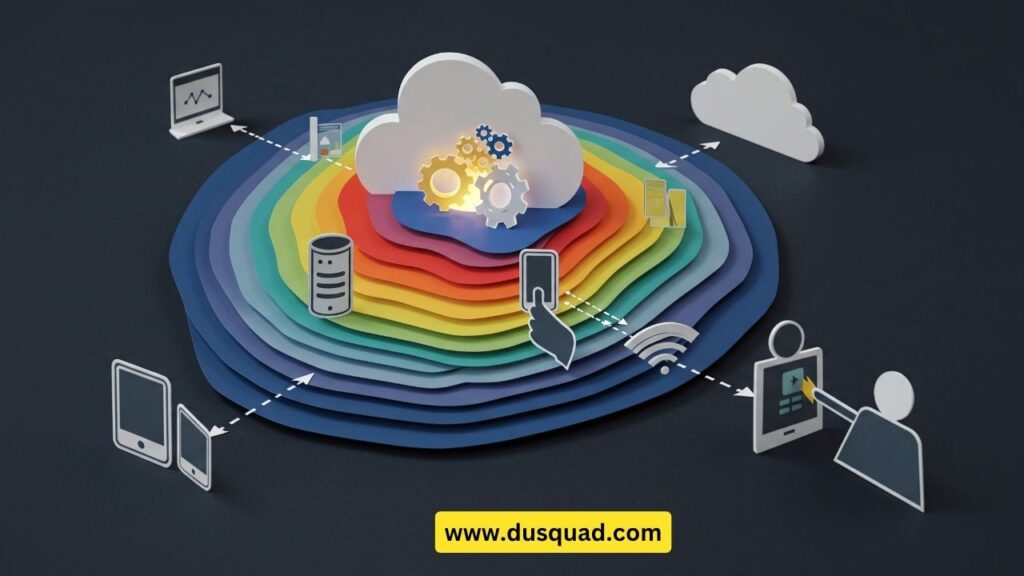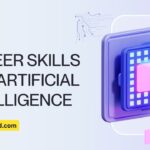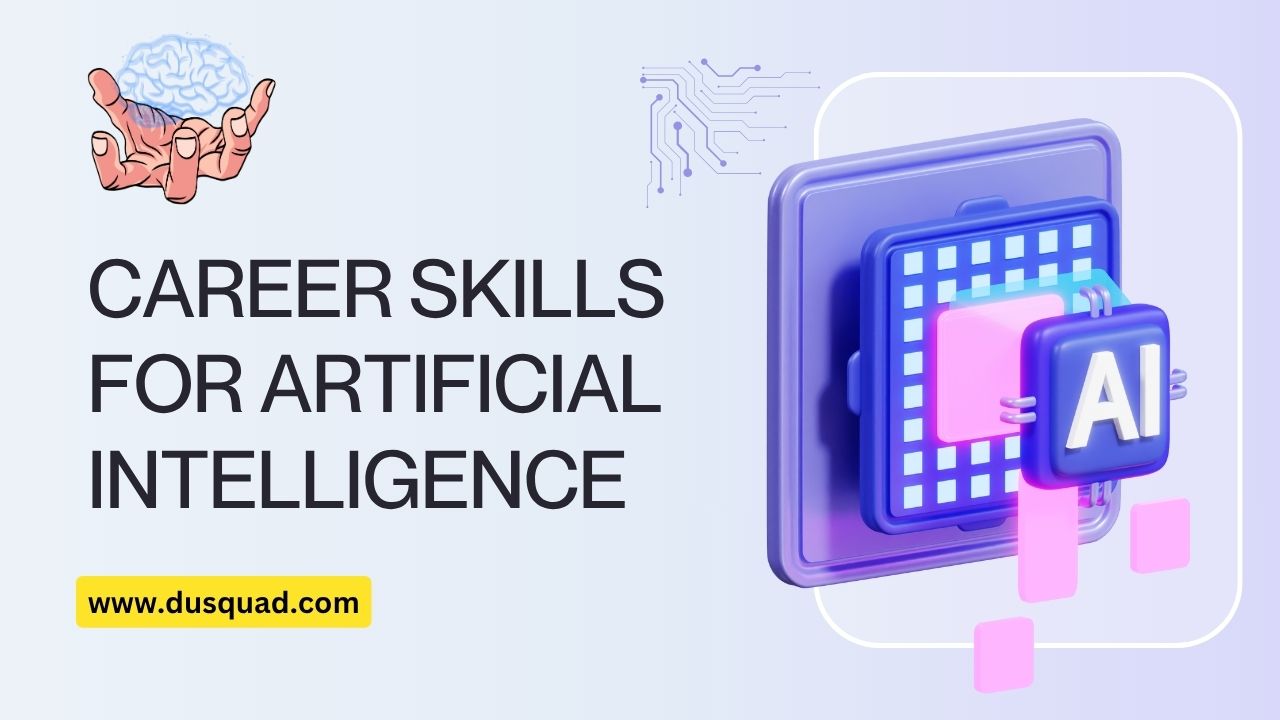In the rapidly evolving landscape of artificial intelligence (AI), mastery requires more than basic familiarity with algorithms or tools; it demands a deliberate blend of deep technical expertise, contextual awareness, and human-centred adaptability. For students aspiring to enter this dynamic field, cultivating a comprehensive and strategic skill set offers not only a competitive advantage but also long-term professional resilience. Drawing on insights from leading academic and industry sources, the following ten career skills for artificial intelligence outline the essential competencies that students must develop to succeed in AI-driven careers.
Programming and Software Development Career Skills For Artificial Intelligence
At the heart of AI lies programming, the craft that transforms abstract ideas into executable models. Proficiency in coding languages such as Python, TensorFlow, and PyTorch forms the foundation of AI work, while familiarity with C++ and Java enhances versatility across frameworks.
Beyond syntax, students must learn to design structured algorithms, employ version-control systems like Git, and engage in real-world projects that involve deploying AI solutions. Building small applications or replicating research papers helps students transition from theoretical learning to applied innovation.
Mathematics and Statistics Career Skills For Artificial Intelligence

Behind every AI model is a rigorous mathematical backbone. Linear algebra underpins neural networks, calculus drives optimisation, and probability and statistics guide inference and uncertainty estimation. A solid grasp of these areas enables students to understand how algorithms function rather than treating them as opaque systems.
Visual tools such as matrix diagrams or gradient maps can make abstract concepts intuitive, while mathematical exercises—proofs, derivations, and problem-solving analytical discipline. Students who combine intuitive reasoning with formal precision become far more capable of innovating responsibly within AI.
Machine Learning and Deep Learning Methodologies
Machine learning (ML) and deep learning (DL) sit at the centre of modern AI applications from recommendation systems to autonomous vehicles. Students should gain both conceptual understanding and practical competence in regression, clustering, decision trees, and neural networks.
Mastery involves not only implementing algorithms but also interpreting model behaviour, selecting hyperparameters, and evaluating performance metrics such as accuracy, recall, and F1 scores. Engaging with open datasets like MNIST or CIFAR and experimenting through frameworks such as TensorFlow or PyTorch allows students to internalise the iterative nature of AI model building.
Data Handling, Wrangling, and Visualisation Career Skills For Artificial Intelligence
AI thrives on data; therefore, the ability to collect, clean, preprocess, and visualise data is indispensable. Students must learn to handle noisy or incomplete datasets, understand database management through SQL, and manipulate structured or unstructured data using tools like pandas or NumPy.
Visualisation platforms such as Tableau or matplotlib help translate raw information into insights that inform decision-making. Building data pipelines, where students source data, refine it, and extract meaning, strengthens their understanding of how models depend on quality inputs.
Domain Knowledge and Application Awareness Career Skills For Artificial Intelligence
While technical proficiency is essential, contextual intelligence, understanding where and how AI is applied, determines its impact. Whether in healthcare, finance, robotics, or environmental modelling, domain-specific insight enhances the relevance and accuracy of AI solutions. For instance, applying machine learning in healthcare demands comprehension of medical ethics and patient data sensitivity.
Students should explore one or two domains deeply, read current research, analyse case studies, and design prototypes that solve real-world problems. Such contextual immersion bridges the gap between algorithmic power and societal utility.
Cloud Computing, Deployment, and Big-Data Infrastructure

Modern AI systems rarely operate in isolation. They depend on scalable infrastructure and deployment frameworks. Cloud platforms such as Amazon Web Services (AWS), Microsoft Azure, and Google Cloud Platform (GCP) allow students to train, deploy, and monitor AI models efficiently.
Learning about containerisation technologies like Docker, orchestration tools like Kubernetes, and big-data systems like Hadoop or Spark prepares students for production-level implementation. Understanding how to operationalise models transforms theoretical expertise into enterprise-ready capability, an essential step for anyone aspiring to build deployable AI solutions.
Natural Language Processing (NLP) and Computer Vision (CV)
Among AI’s most dynamic subfields are NLP and CV—technologies that enable machines to understand language and interpret images. Mastery of NLP involves tokenisation, sentiment analysis, text classification, and language translation. Computer vision, on the other hand, encompasses image recognition, object detection, and scene segmentation.
Students can begin with publicly available datasets such as IMDB reviews or ImageNet, apply pre-trained models, and progressively experiment with fine-tuning architectures. These subfields not only sharpen technical expertise but also expose students to the interdisciplinary frontiers where AI meets linguistics, cognition, and perception.
Critical Thinking, Problem-Solving, and Adaptability
Beyond coding and computation, the ability to frame problems correctly, question assumptions, and interpret model outcomes critically is what distinguishes strong AI professionals. In a domain defined by constant change, adaptability becomes a strategic necessity.
Students should engage in hackathons, design challenges, and interdisciplinary collaborations where they must navigate ambiguous tasks. Such experiences train them to define appropriate metrics of success, recognise when models fail, and iterate efficiently. Critical thinking also helps students resist the temptation of technological determinism by emphasising human judgment alongside machine efficiency.
Ethical Awareness, Fairness, and Responsible AI
AI systems increasingly shape social and economic realities, raising pressing ethical questions about bias, privacy, accountability, and transparency. Responsible AI practices require understanding how datasets reflect human inequalities and how algorithms can perpetuate them.
Students must learn to audit datasets, identify potential biases in model predictions, and implement fairness-aware techniques. Exposure to ethical frameworks and policy debates deepens their appreciation of AI’s societal impact. Embedding ethics into technical training ensures that future AI practitioners design systems that serve humanity rather than merely efficiency or profit.
Communication, Collaboration, and Learning Agility
The final AI career skill that anchors all others is the ability to communicate and collaborate effectively. AI projects are inherently multidisciplinary, involving data scientists, engineers, domain experts, and policymakers. Students must therefore learn to translate complex findings into accessible narratives for varied audiences—technical or otherwise.
Presenting results clearly, writing concise reports, and engaging in teamwork foster professional maturity. Equally important is learning agility: the capacity to continuously update one’s skills through online courses, peer learning, and research engagement. In a discipline that evolves as rapidly as AI, curiosity and humility are as valuable as technical mastery.
Conclusion
For students pursuing careers in AI, the deliberate cultivation of these ten interconnected career skills for artificial intelligence forms a balanced and future-ready foundation. Technical expertise, rooted in programming, mathematics, and machine learning, must harmonise with infrastructural literacy in data handling and cloud deployment while being anchored in ethical responsibility and communication competence.
In an environment marked by rapid innovation and increasing automation, success depends not simply on mastering tools but on applying them thoughtfully, interpreting results critically, and engaging with broader human contexts. The future of AI will be shaped not just by those who can code models, but by those who can question, adapt, and lead with integrity.















